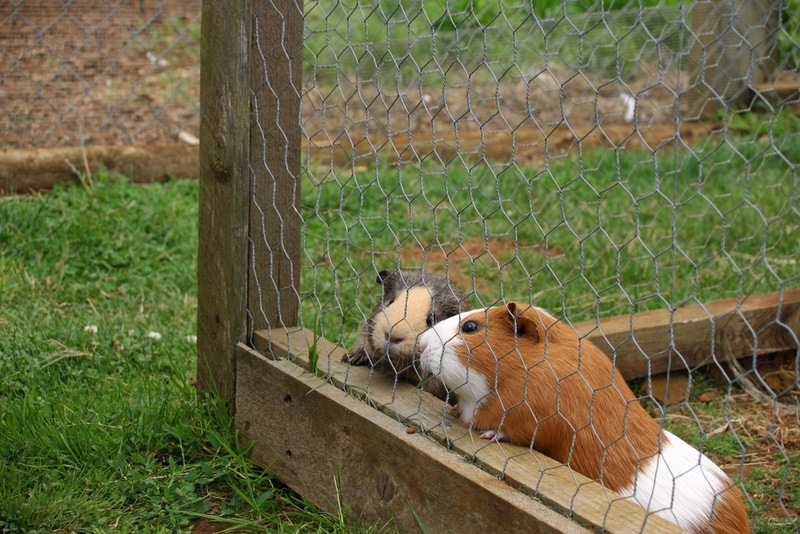Male vs Female Guinea Pig: Differences Explained (With Pictures)

Updated on
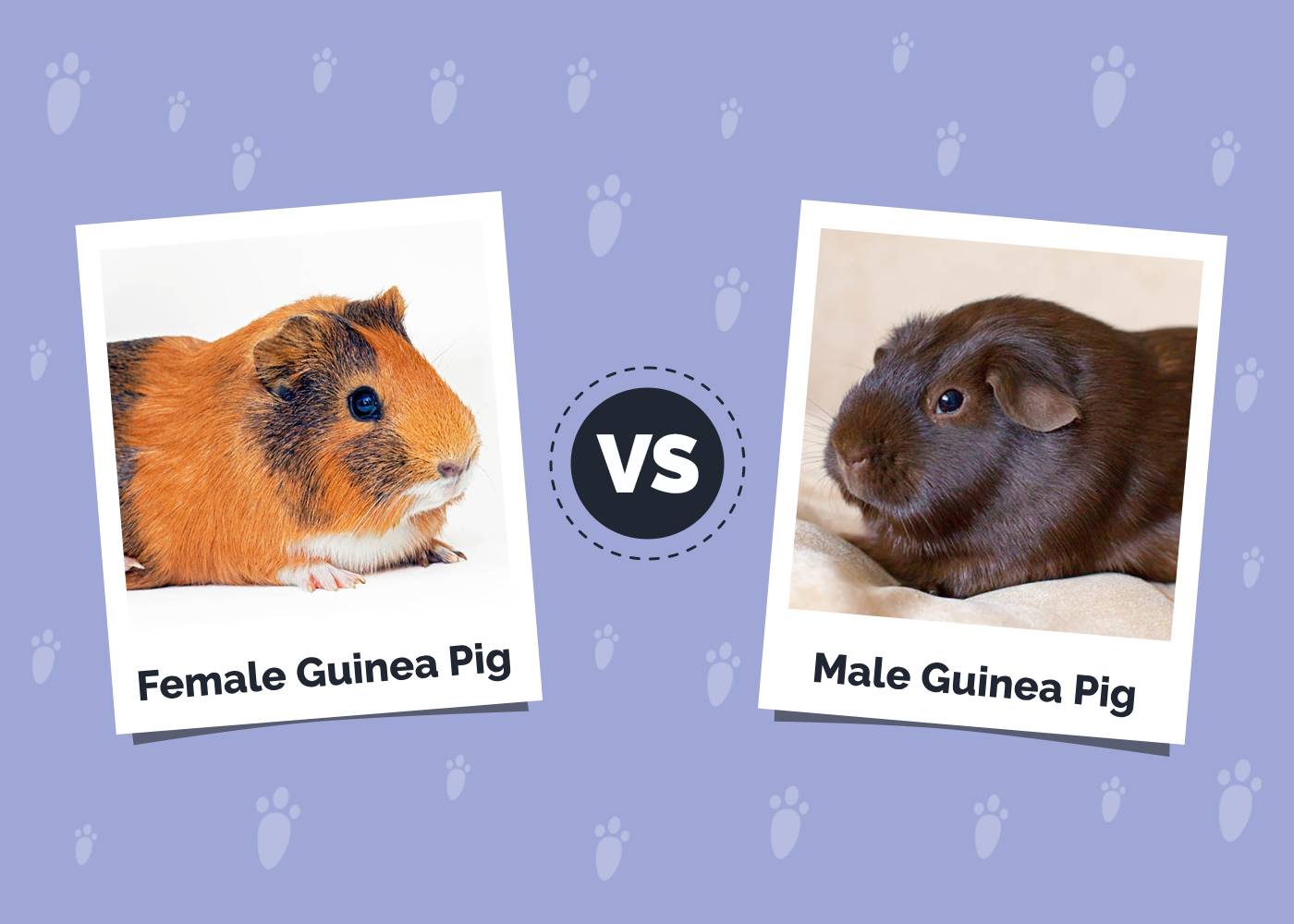
If you’re looking for a small mammal, guinea pigs are a great starting place. They are generally easy to care for and good-tempered, and since they’re relatively common, it is not too hard to find food, equipment, and vet care. But when you decide to adopt a guinea pig into your home, you do have one important decision to make—male or female?
For the most part, guinea pigs of both genders are similar, but there are some striking differences. Male and female guinea pigs have slightly different personalities and health needs. They also have different social structures—so choosing what gender you want makes a big difference in how many guinea pigs you can keep.
Visual Differences
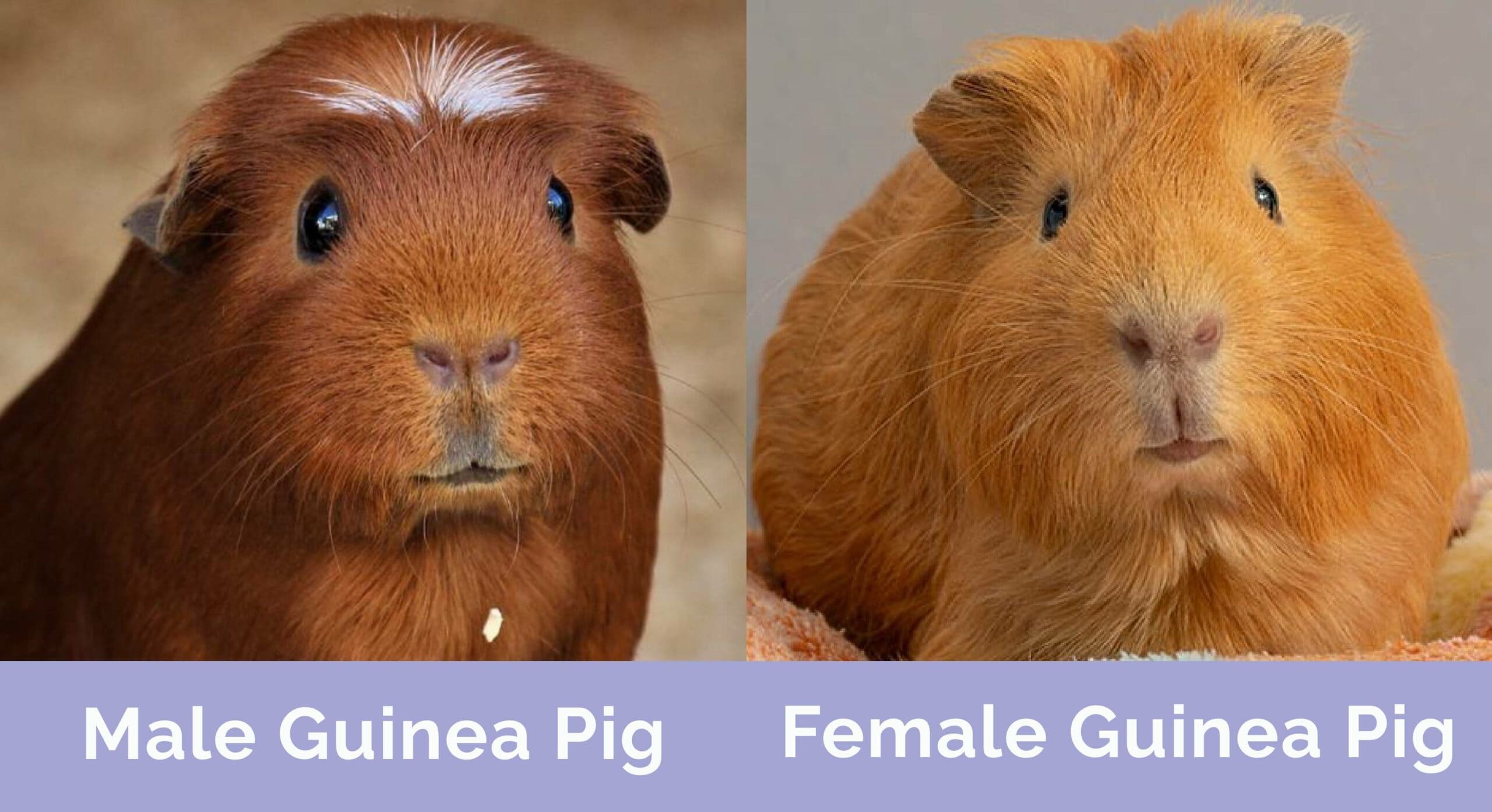
At a Glance
- Average length (adult): 9–12 inches
- Average weight (adult): 2–3 lbs
- Average lifespan: 5–8 years
- Average height (adult): 8–10 inches
- Average weight (adult): 1.5–2.25 lbs
- Average lifespan: 4–8 years
Guinea Pigs 101

If you’ve never owned a guinea pig before, you might be surprised at how easy they are to care for. Guinea pigs, also known as cavies, are hardy, social, and adaptable. With their strong personalities, every guinea pig is different! Guinea pigs are social animals that generally do best when they aren’t kept alone. Most of their diet is made up of hay, with a small amount of fresh fruit and vegetables added as well. Some guinea pigs are shyer than others, but most can adapt to being handled regularly and will even bond with their favorite people.
Male and female guinea pigs both make good pets, but there are some differences. Milk guinea pigs are called boars, while female guinea pigs are called sows. Read on to learn whether boars, sows, or a combination is right for you.
Male Guinea Pig Overview
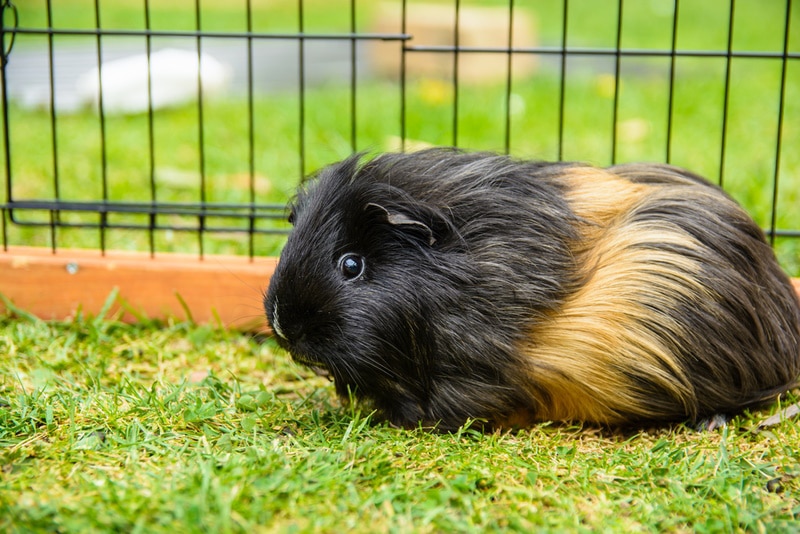
Personality / Character
Guinea pig boars are well known for their friendly, outgoing personalities. They are much more likely to be happy with being handled than sows, so if you don’t want a shy guinea pig, a male is a safer choice. They also tend to be more confident in general—that makes them more willing to explore and try new foods, but it can also get them into trouble!
When it comes to other guinea pigs, males have their own social dynamics. They do best in a bonded pair or occasionally trio with other males, or else as the only (neutered) male along with one or more females. It’s easier to bring together young males than adults, but they can learn to get along at any age. However, if you want more than two or three guinea pigs, you’ll probably be limited to only one male.
Training
You can train your guinea pig to improve its behavior—like teaching it to use a litterbox, come when you call or stop biting. Most guinea pigs can also learn some simple tricks with time and patience—like giving you a high five or jumping on command. Male and female guinea pigs can both be trained, but boars do have a slight edge because they tend to be more outgoing, making it easier to get started.

Health & Care
Guinea pigs are relatively healthy, but guinea pig boars do have their own health problems. Most of the time, boars are relatively healthy, but there is one health problem that affects them more than sows. Guinea pigs should be munching on food all day long to stay healthy, keeping their digestive system in constant movement. But as your boar ages, he may start to lose muscle strength in his digestive system, leading to fecal buildup called impaction. Neutering your guinea pig will prevent impaction, while a high-fiber diet and manual cleaning can be used to treat it.
Breeding
Boars can breed as early as eight weeks old, but it is healthiest to wait until they are around six months old or older before breeding. When around a female in heat, he will make excited noises and draw near or circle around the female before mating. It’s important to keep any other males away to avoid aggressive competition between males. Once you know your sow is pregnant, you should separate her from the boar to prevent him from mating with her in the days after she gives birth.
- More confident
- Can be less shy
- Can be noisier
- Can be aggressive to other males
Female Guinea Pig Overview
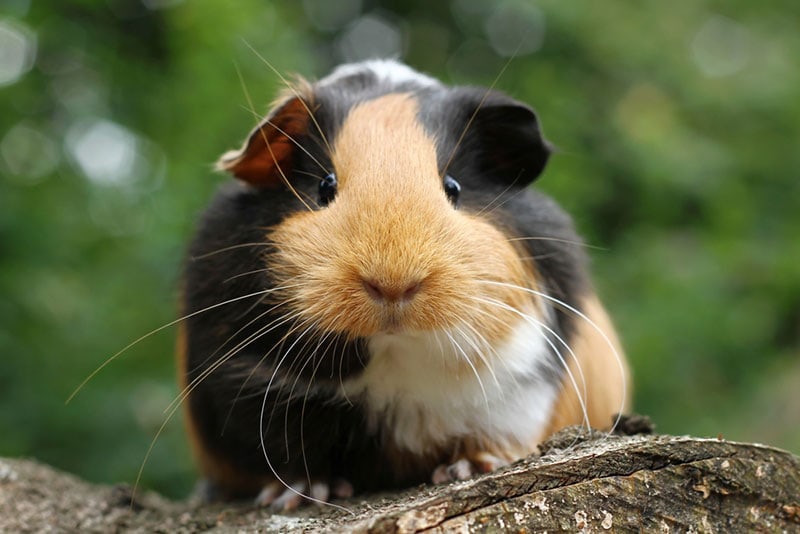
Personality / Character
Female guinea pigs tend to be a little quieter than males and can sometimes be shy. However, they also can be very sweet and loving, especially with the people they know best. Guinea pig sows often form strong bonds with their owners and the other pigs that live with them.
If you want to have a large group of guinea pigs, females are the way to go. In the wild, guinea pigs form family groups of up to ten individuals. Sows will generally get along well with other guinea pigs of either gender. Your female guinea pig will be happiest in an all-female group of two or more, a group with one neutered male or with one male guinea pig.
Training
Female guinea pigs can also be trained to improve their behavior or do tricks. Just like boars, it takes time and patience to train a sow, and the limits of training are mostly determined by your sow’s personality. Because sows can be a little shy, it can be harder to train a female guinea pig at first, but they are equally intelligent and capable of learning.
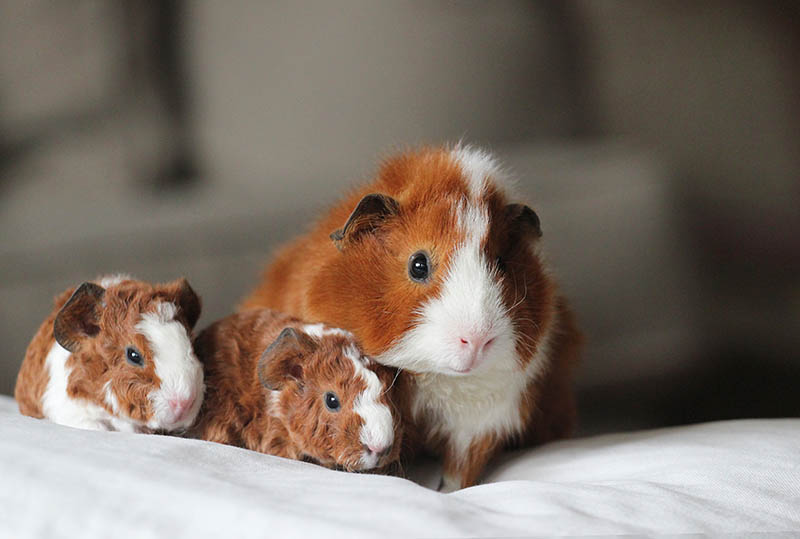
Health & Care
If you have sows, consider getting them spayed. Not only does spaying your guinea pig prevent her from breeding, but it also helps protect her from various health issues. Guinea pigs are susceptible to infections of the uterus and ovaries or other life-threatening diseases related to their reproductive organs. In many cases, these can lead to serious health problems if left untreated.
Breeding
If you decide to breed guinea pigs, it’s important to breed your guinea pig at the right time. Breeding for the first time when she’s between four and seven months is ideal. Although guinea pigs can breed at as young as eight weeks, your sow will be healthiest if she’s a little older. However, you don’t want to wait too long! Once your guinea pig reaches seven months, her pelvis begins to stiffen. Guinea pigs that haven’t given birth before that point often have problems with delivery.
Female guinea pigs go into heat on a 16-day cycle. Guinea pig pregnancy lasts about 60–72 days. You may not see signs that your sow is in heat or know exactly when breeding occurs; however, as your guinea pig nears the end of pregnancy, it should be obvious that she is pregnant because of her enlarged abdomen. Guinea pigs usually give birth to three piglets at a time, although larger litters are normal as well.
- Sweet personality
- Can be housed in larger groups
- Often quieter
- Can be shy
Which Gender Is Right for You?
When choosing a guinea pig, there are good reasons to buy a male or a female. Females tend to be more flexible in group dynamics, making it easier to integrate new guineas into your family, but they can be shy. Males are often easier to socialize with humans because of their more confident nature, but they can get aggressive toward other males, especially if there are females around. You generally can’t keep more than three boars together or one boar with any number of sows. They also tend to be a little more talkative, which can be a pro or a con. Which one is better? You’ll have to decide for yourself.
Featured Image Credit:

